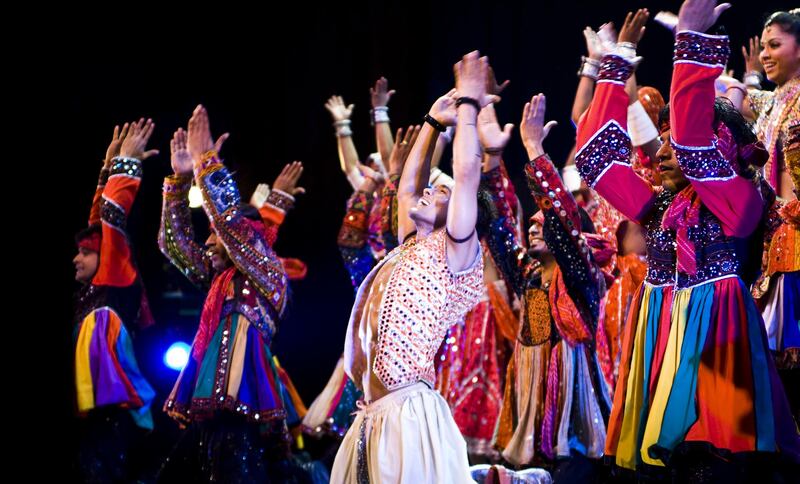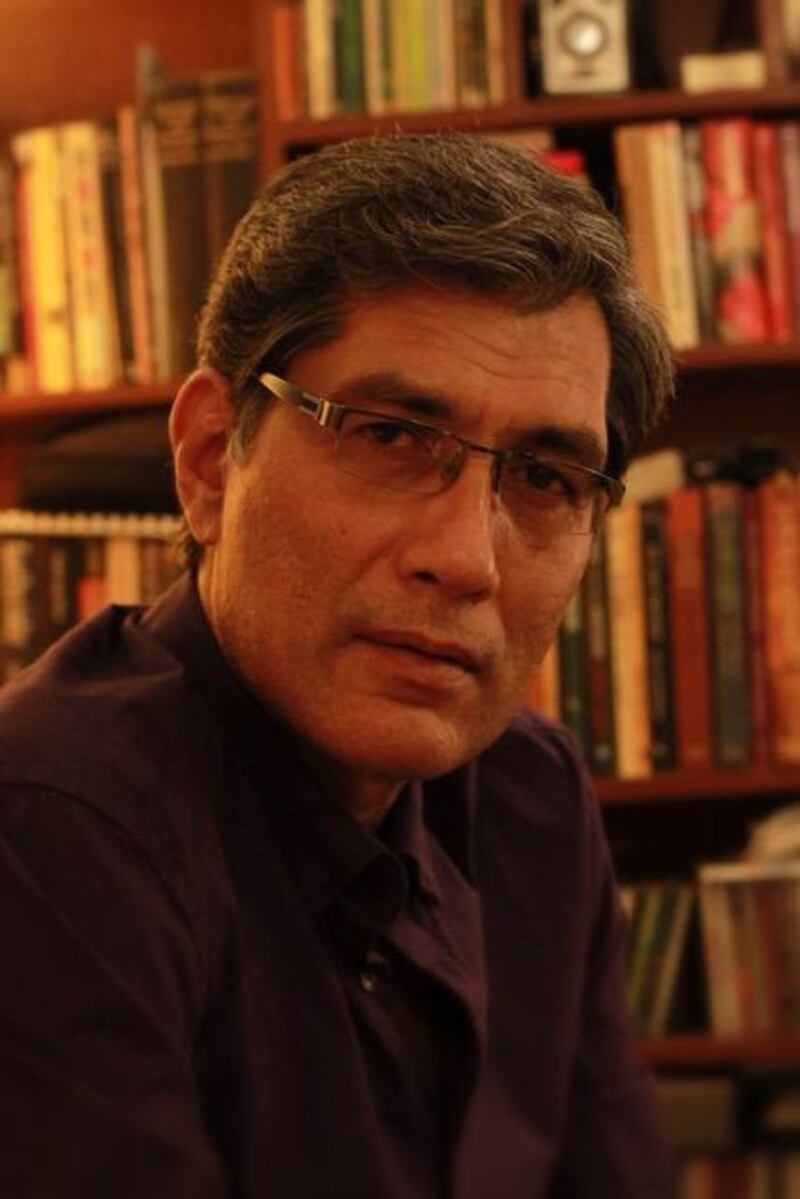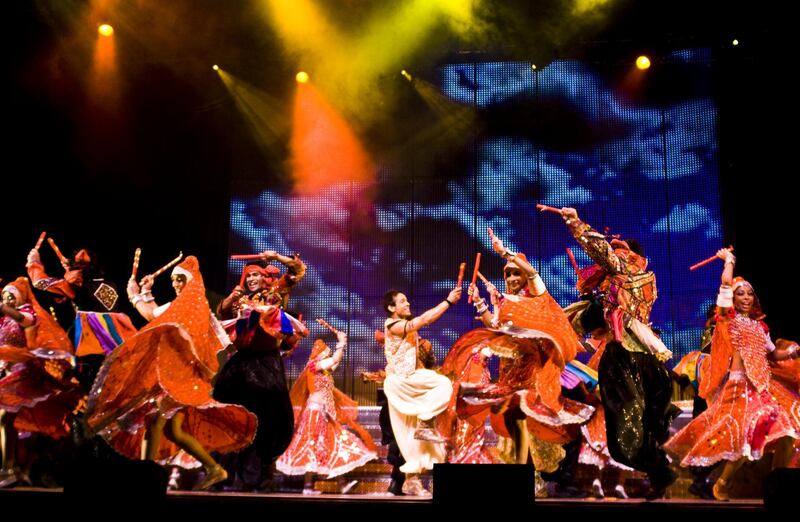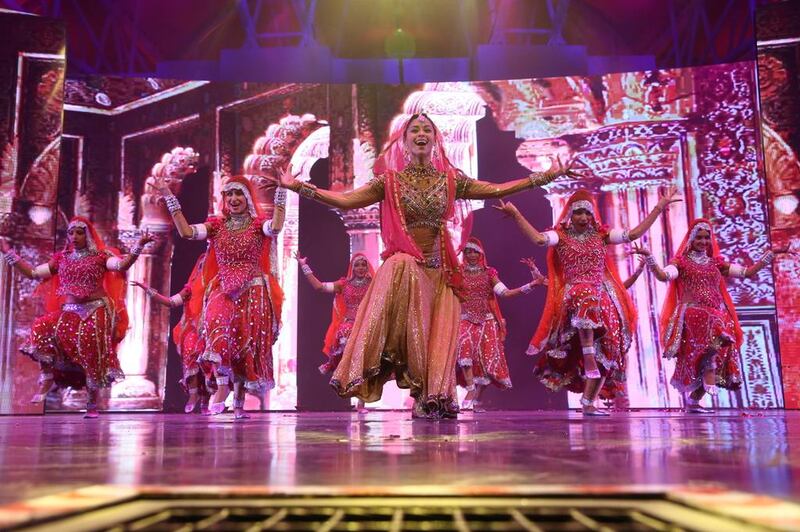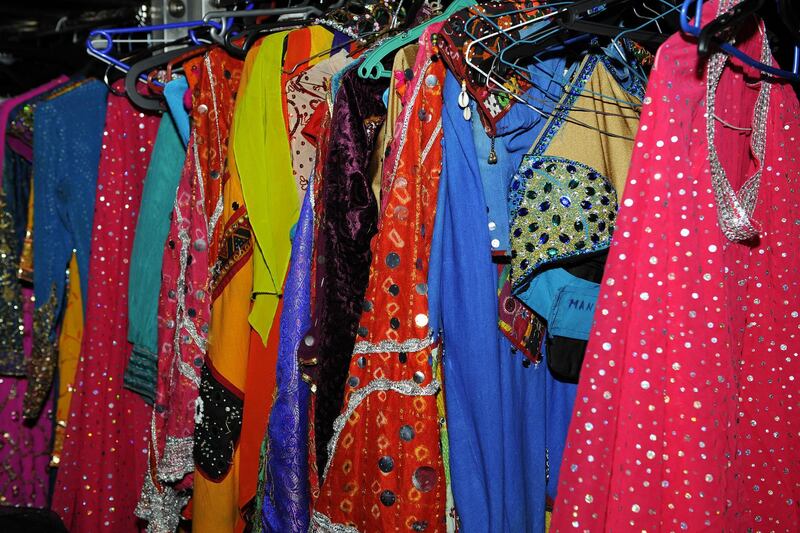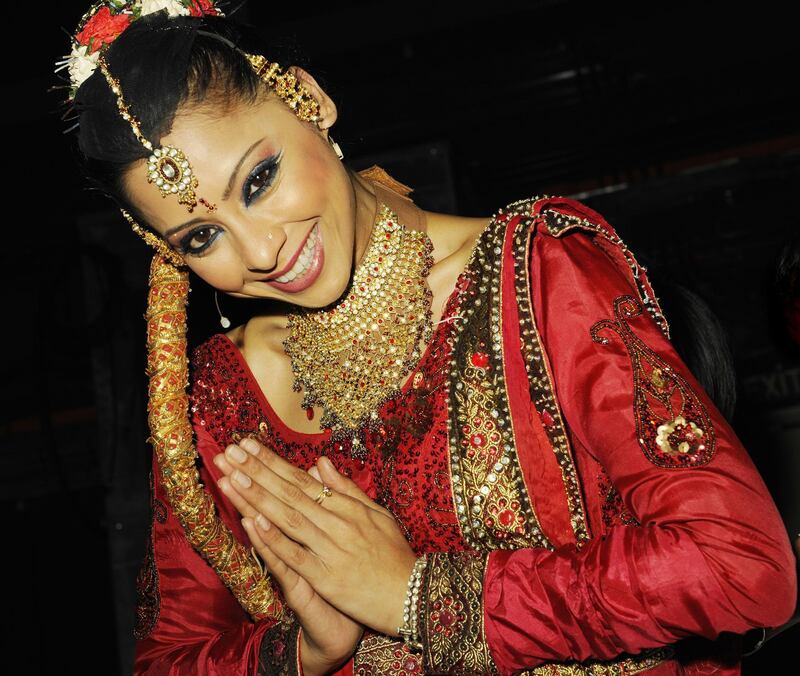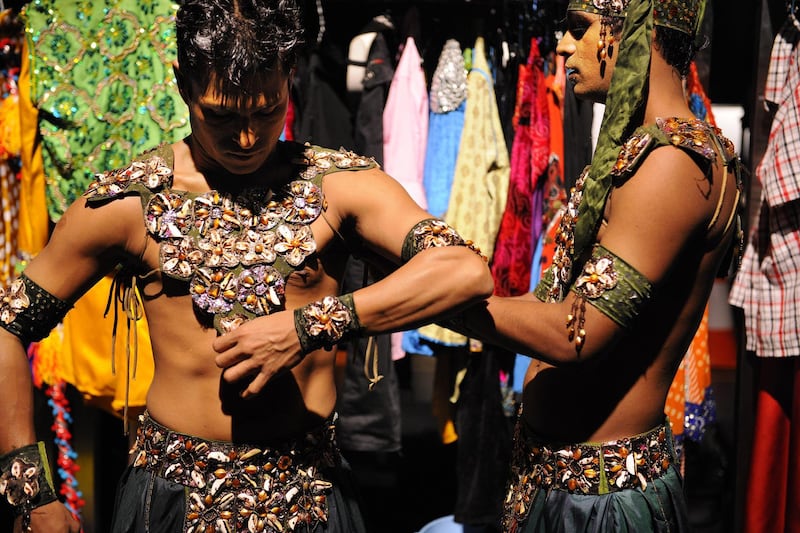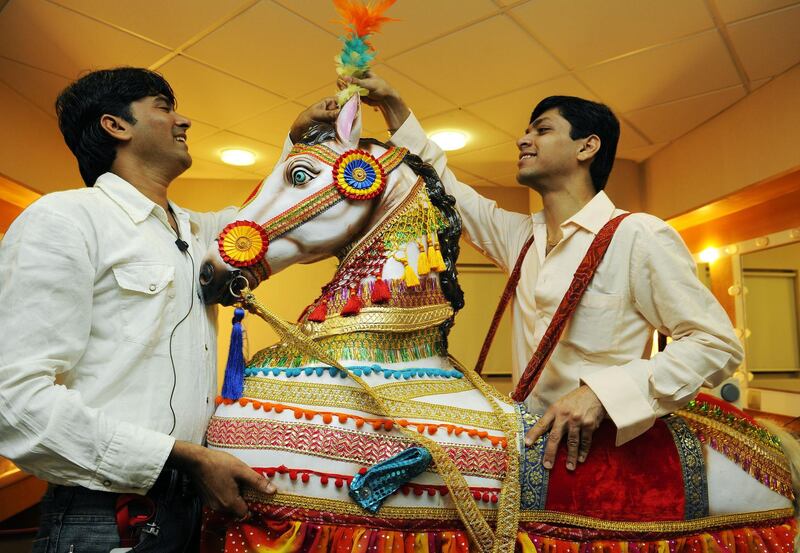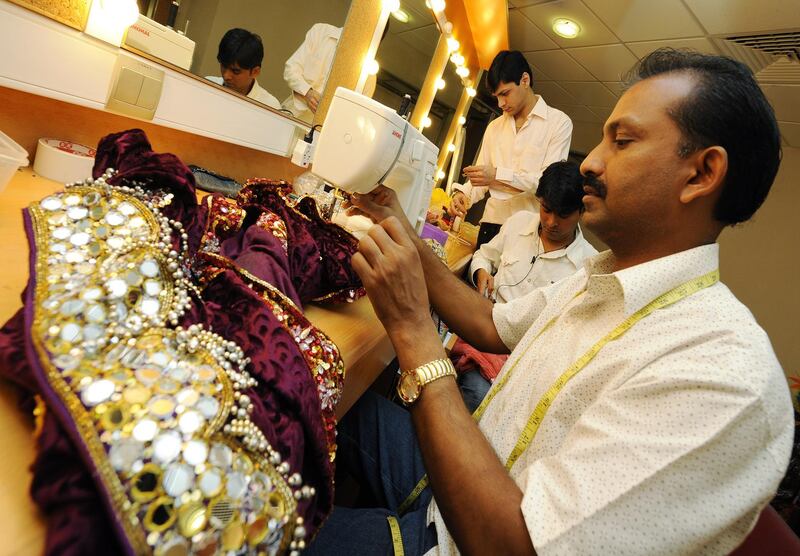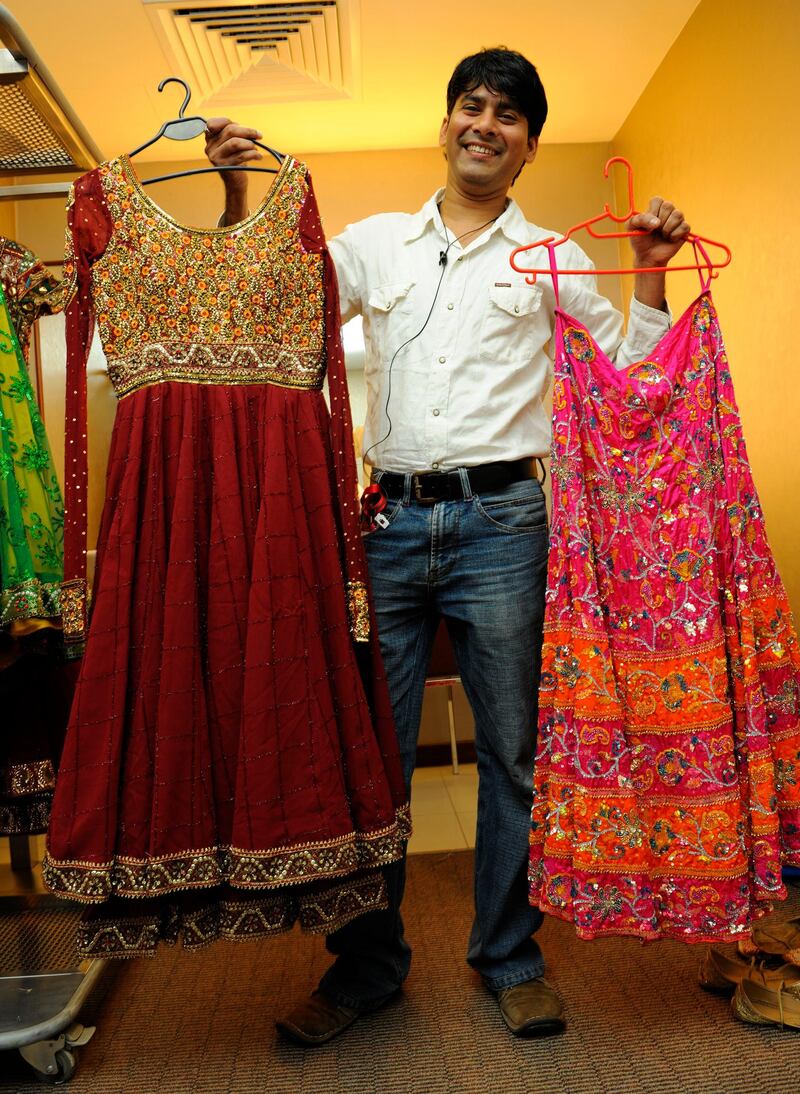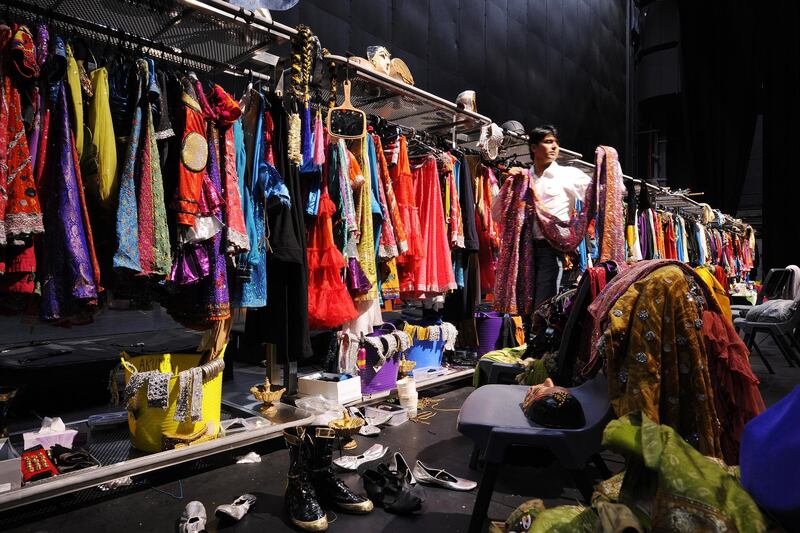The age-old premise behind the phenomenally successful musical The Merchants of Bollywood is one audiences all over the world can relate to: the clash of aspirations and values between generations.
Based on the true story of Hiralalji Merchant, a classically trained dancer and respected choreographer of classic Hindi films, and his granddaughter Vaibhavi Merchant, the high-octane musical immerses audiences in the energy and glamour of India's film industry while also exploring universal themes such as the clash between old and new, identity, heritage and forgiveness. Over the past 10 years, The Merchants of Bollywood has delighted more than two million theatregoers across five continents.
The musical's long-awaited debut in Abu Dhabi marks the launch of the 15th Abu Dhabi Festival, on Thursday at Emirates Palace. It is a fitting opening show as India is this year's Country of Honour, reflecting the long tradition of cultural exchange between the subcontinent and the UAE.
'The last great guru'
“Vaibhavi Merchant is a very famous choreographer in the film industry in India and it is the story of her grandfather,” says Indian actor Denzil Smith, who plays Shantilal, the character based on Hiralalji Merchant.
“He was a classical exponent of this dance form called Kathak and he went into the choreography of commercial Hindi movies and then returned to his roots as a classical dancer.”
The relationship between the two inspired the story at the heart of the musical, written and directed by Australian Toby Gough. It includes an original score composed by Salim and Sulaiman Merchant and is choreographed by Vaibhavi Merchant herself.
Having retired from choreographing Hindi movies, believing that the industry has become too commercialised, Shantilal is “the last great guru”, teaching the ancient traditions of Kathak in the deserts of Rajasthan. Kathak, one of the 10 classical forms of Indian dance, is derived from the ancient Sanskrit words for “story” and “the one who tells a story”. Traditionally, it was performed by wandering troops who used it to communicate epics and myths, through movement and singing.
____________
Read more:
Salman Khan's 'Race 3' to bring high-octane chaos to Abu Dhabi streets
Film review: 'Pari' flies between fairy tale and horror
[ Your essential guide to things to do in Abu Dhabi and Al Ain ]
____________
The Merchants of Bollywood does something similar, using song and dance to tell not only the story of Shantilal and his granddaughter Ayesha – played by Carol Furtado – but the history of Bollywood.
Charting Bollywood through dance
When Ayesha chooses a career in Bollywood mixing classical Indian dance with modern western influences, Shantilal is furious. Her return home in search of reconciliation takes her face-to-face with her embittered grandfather and back into the arms of childhood sweetheart Uday.
"It's a great story," says Smith, who has appeared in dozens of stage productions, as well as in acclaimed films including Viceroy's House, The Lunchbox, The Best Exotic Marigold Hotel and its sequel The Second Best Exotic Marigold Hotel.
“It juxtaposes the conflict that always exists between the old and the new, the classical versus the modern. The old order changes, giving place to the new, and there is always a conflict when that happens. The story explores that on many levels.”
The story of a family feud and forgiveness is brought to life by the production's spectacular songs and the dramatic ensemble dance numbers, which punctuate the dialogue. The production features more than 40 cast members and includes more than 1,000 colourful costumes and 2,000 pieces of glittering Indian jewellery, bringing all the glitz and glamour of Bollywood to the stage.
It follows the format of the Indian “masala musical”, a spicy blend of action, comedy, drama and dance, but also includes some historical context, exploring the changing identity and dance styles of Bollywood from the 1950s Golden Age, through subsequent decades when traditional Indian dance gradually became infused with western styles and influences. Both aspects are woven into the show’s expertly choreographed dances, which span classical and modern Indian and western dance forms.
“It is very colourful. It is very bright. It also takes you into the folk side of India,” says Smith, every word perfectly enunciated in the deep, velvety voice of a veteran actor. “It takes you to the modern Bollywood side of India, the modern dancing style, which is a mix of a little ballet, some hip-hop, breakdance. The present Bollywood style of dancing is an amalgamation of many styles, including Indian classical. It’s got its own particular flair.”
How Smith approaches different projects
To prepare for his roles, Smith says he tries to learn as much as he can about each character and what makes them tick. His approach varies from one production to another.
"It depends very much on the kind of part I'm playing," he says. "For instance, when I did Viceroy's House, the Gurinder Chadha film about the Partition, I played Jinnah, who is known as the 'father of Pakistan', so for that I had to do extensive reading from all sides, because in some societies – I shall not name them – he is being painted as a villain.
“When you’re doing a fictional character you create that history, you create the background, and it’s all dependant on the script – most of the clues come from what the other characters say about you.”
In The Merchants of Bollywood, his character was inspired by a real-life person, so Smith conducted interviews and read widely to gain more insight into the personality of Hiralalji Merchant.
“I read a lot about him and then I had the opportunity to meet with his granddaughters and ask them about their relationship with their grandfather. I talked to Vaibhavi a lot. I talked to Shruti, the younger girl, who is also a choreographer, and got a lot of insight, and to some other people in the industry, who shared little incidents… For example, he would never fly to a shoot. He always travelled by train because he was so scared of flying. These anecdotes are what make them human and interesting.”
'A Hindi film on stage'
After hundreds of performances, Smith has no trouble embodying the character of Shantilal. The main challenges of the production are technical, he says, due to “the sheer scale of it and the coordination… The dancing is really top class – high quality, high-energy, high-voltage – and to maintain that consistently is a challenge, which this production has done. More than that, it has made the Indian film industry accessible and likeable to many cultures.”
Smith is excited to perform in Abu Dhabi. "We're looking forward to performing," he says.
“There is a lot of common ground between India and this whole region, in terms of art and emotion. We’re the same sort of warm-blooded people and we seem to relate very much to the same sort of social dynamic. It’ll click.”
While the show is certain to appeal to Bollywood aficionados, those less familiar with Indian movies will also enjoy it. “I would say it’s an explosive, high-energy, high-voltage extravaganza, a Hindi film on stage,” says Smith. “I’ve performed it over the years across cultures, right across Europe, down to Malaysia, and the reactions the show receives are simply amazing... It infuses you with a smile and a very happy feeling. After the show, you’ll be left wanting to shake your feet as you walk out.”
The Merchants of Bollywood is at Emirates Palace Auditorium on Thursday and Friday, 8pm. For more information and tickets, see www.abudhabifestival.ae
